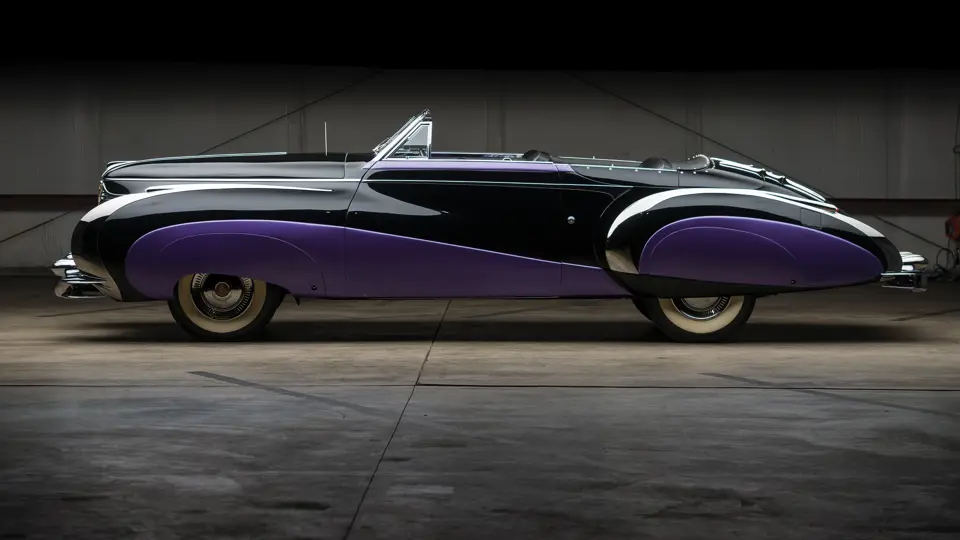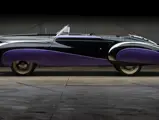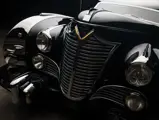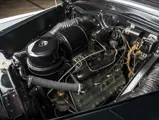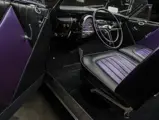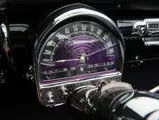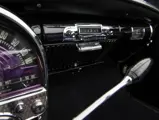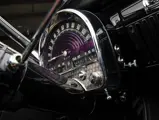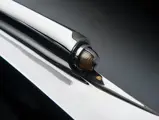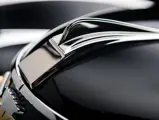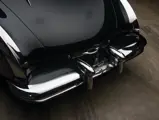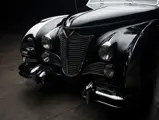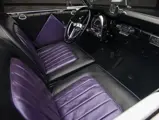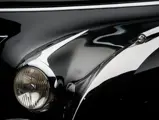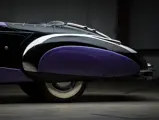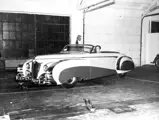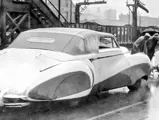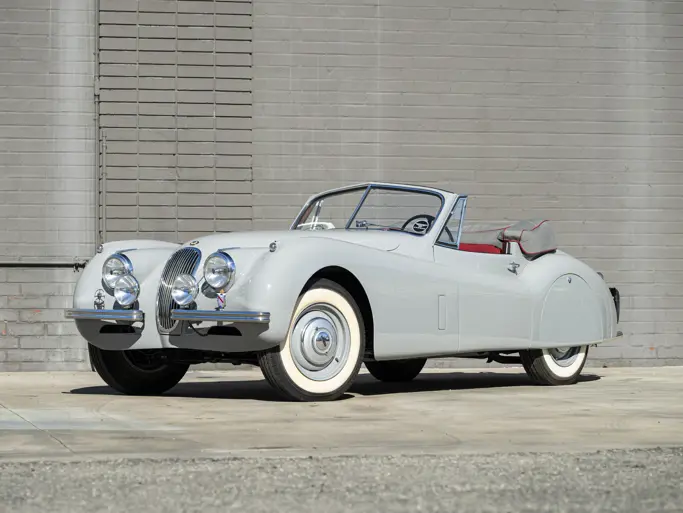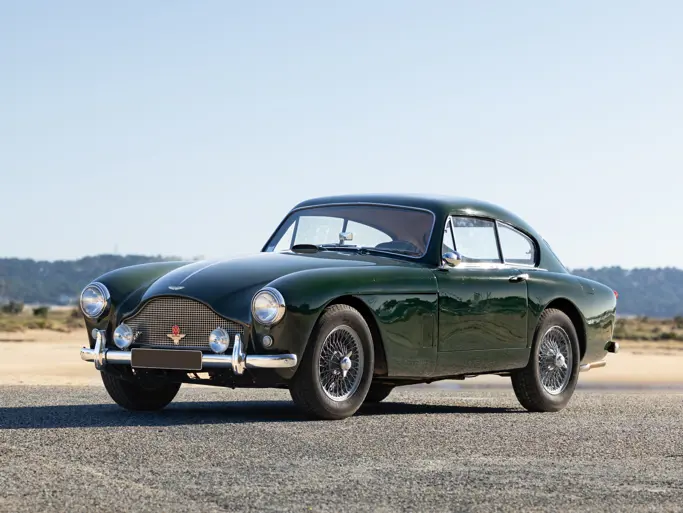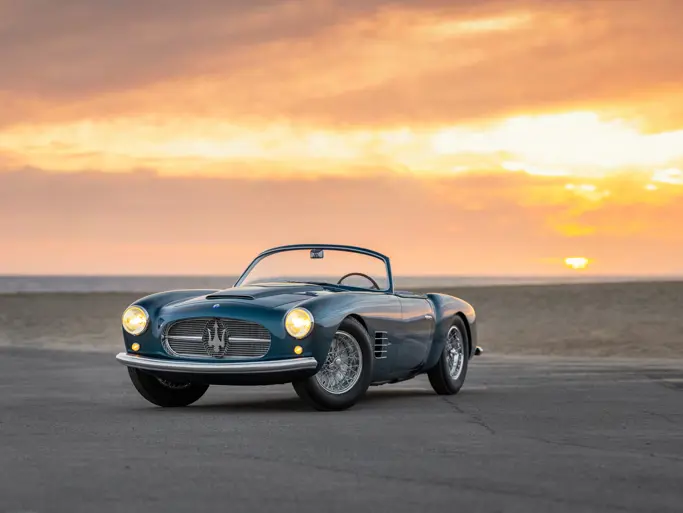
1948 Cadillac Series 62 Cabriolet by Saoutchik
{{lr.item.text}}
$857,500 USD | Sold
{{bidding.lot.reserveStatusFormatted}}
- The ultimate example of French coachwork from the end of the Classic Era
- One of two such examples produced; unique styling details
- Built for New York furrier and socialite Louis Ritter
- Fascinating known ownership history with well-known collectors
AN ICON FROM THE END OF AN ERA
Ask any automotive enthusiast to imagine French coachwork, and his mind’s eye will paint liquid lines, elaborately curved and detailed in their colors, shape, and decorative “scallops” of chrome-plated brass. It is a vision fulfilled most elaborately by Carrosserie J. Saoutchik, one of France’s greatest coachbuilders, during the early postwar years of the late 1940s. Saoutchik’s final designs were show-stopping automobiles that were the road-going equivalents of the latest Parisian fashions. They were bold and dramatic, setting the curve–—literally—for design elsewhere in the world. Simply put, after Saoutchik—a true artist of the post-war era—nothing was ever quite the same.
One of the final Saoutchik designs was what can only be called a wild, beautiful cabriolet on a 1948 Cadillac Series 62 chassis. Like every other European shop in the post-war years, Saoutchik wanted American dollars, and what better way than presenting an American car at the 1948 Paris Salon. That it did not look American at all, aside from the dashboard and “sombrero” wheel covers, was beside the point. It was big, extravagant, and aimed right at the newly affluent Yankee.
Enter, right on cue, New York furrier Louis Ritter, who was, as recounted by famed Hollywood exotic car dealer Roger Barlow, “spending his money on custom-built cars while seeking a new life with a lovely new lady. Ritter had come to me because he wanted to have a special convertible built on a Cadillac chassis with a Hydra-Matic transmission so she could drive it. General Motors had refused to sell him one, saying they couldn’t provide their dealers with enough cars . . . we were able to help because of our good relations with Tommy Lee (heir to the Don Lee Cadillac empire in Los Angeles), so the desired chassis was soon on its way to Paris. It went to the atelier of J. Saoutchik, whose handsome sketches for me of proposed Jaguar and Talbot-Lago convertibles had so intrigued Ritter he decided to have Saoutchik execute the Cadillac chassis.”
Ritter traveled to Paris to monitor the completion of his Cadillac, just in time for the Salon where the first Saoutchik-bodied Cadillac would be on display. He was stunned at the sight of a creative high point of Saoutchik and French coachbuilding, which, even in its first days of life, was creating a furor over its audacious lines and beautiful execution. Ritter informed Saoutchik that his Cadillac should be much like the Paris Salon car, and indeed, the two would differ only in the curves at the bottom of their fenders. While he was at it, in typical free-spending fashion, he also owned a second Saoutchik-bodied car, a Talbot-Lago of nearly identical design.
Ritter took delivery of both cars in New York in December of 1949. On New Year’s Day 1950, the two Saoutchiks left Manhattan, with Mr. Barlow in the Talbot-Lago and his lovely wife in the Cadillac, in what can only be described as a cross-country road trip for the ages—during which, the Barlows noted, the Cadillac handled much better on icy roads than the Talbot.
According to Barlow, Ritter “played with his new toys a month or so in Beverly Hills and then gave them to us to sell, clearing his deck for the next efforts of the Paris builders.”
The Cadillac subsequently entered the ownership of Paul Kassoff, long rumored to have been a Ritter associate, and to this day the car bears Kassoff’s initials emblazoned on its radiator shell. From the 1950s until the 1980s it was the property of a family in New Jersey. It was then acquired by the late, great collector Rick Carroll, whose private shop restored it in its current dazzling black and violet color scheme around 1989. Subsequently it passed in 1994 to Jerome Sauls, then several years later to Melvin Olshansky. More recently part of a distinguished private collection, its restoration has been superbly maintained and is still in very fine overall condition.
Representing the glamorous swan song of a fabulous stylist and coachbuilder, the “Ritter Saoutchik” represents audacious French coachbuilding at its absolute peak. It is the vision of an era wrapped into one utterly dramatic automobile.

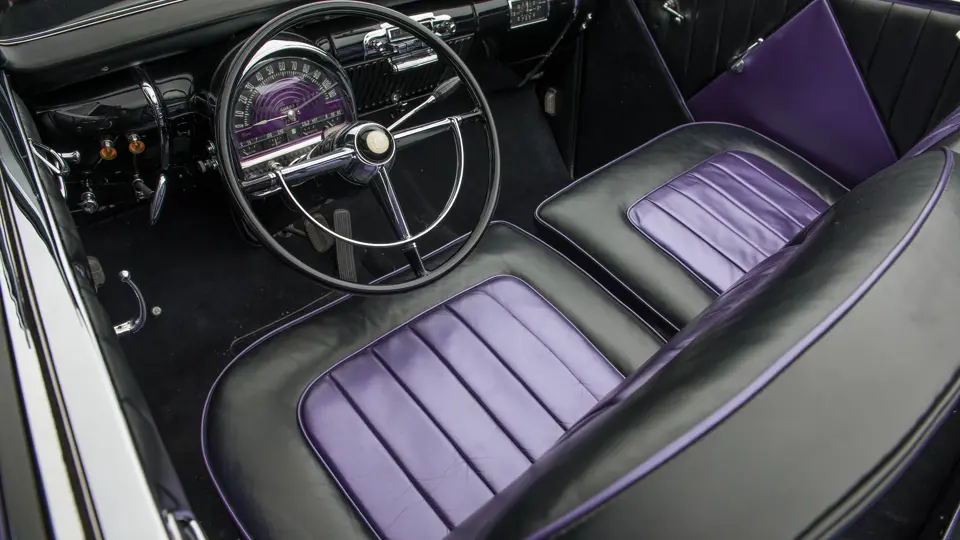


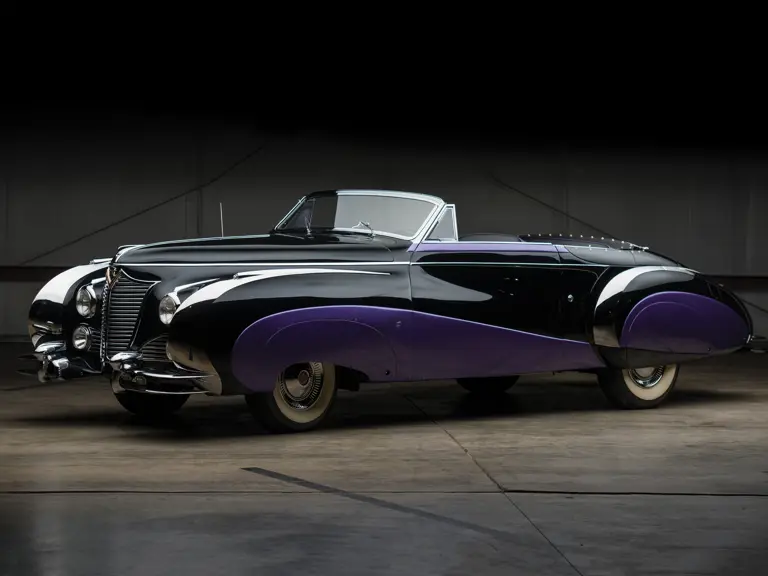
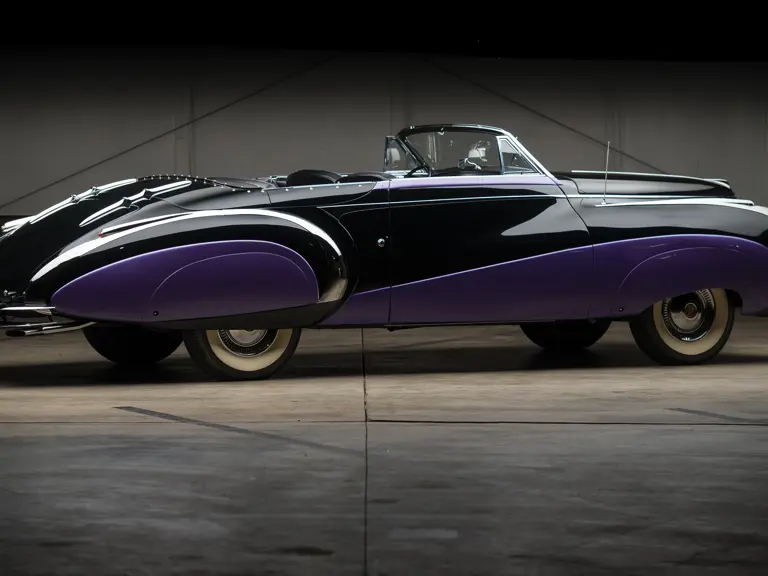
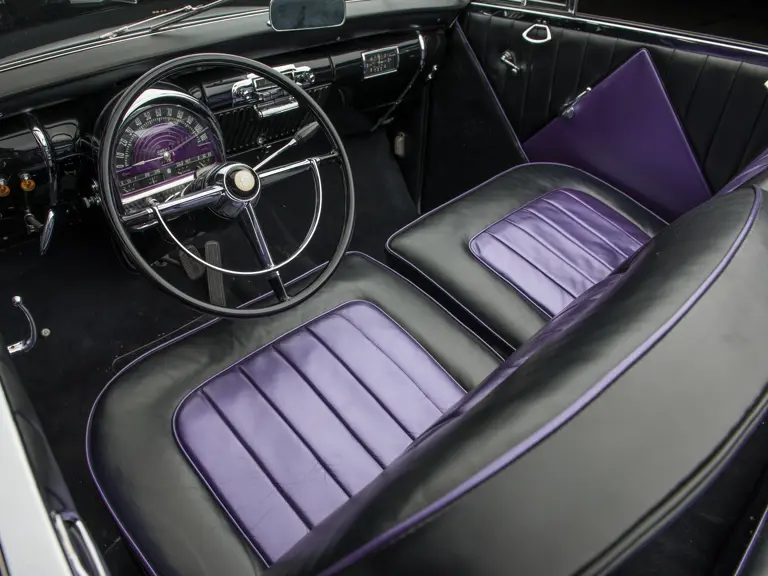
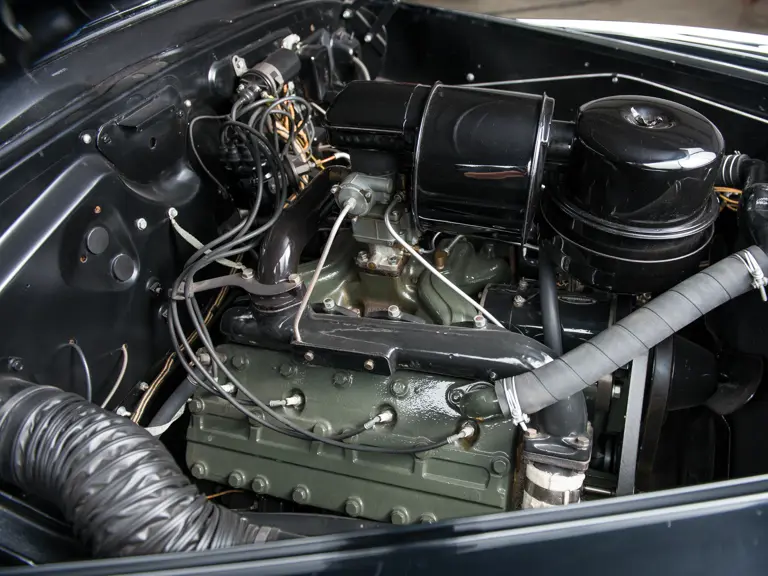





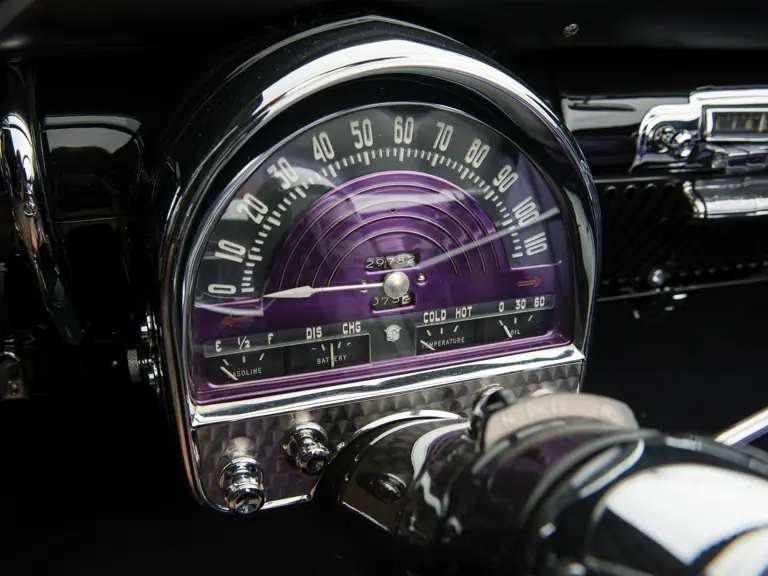
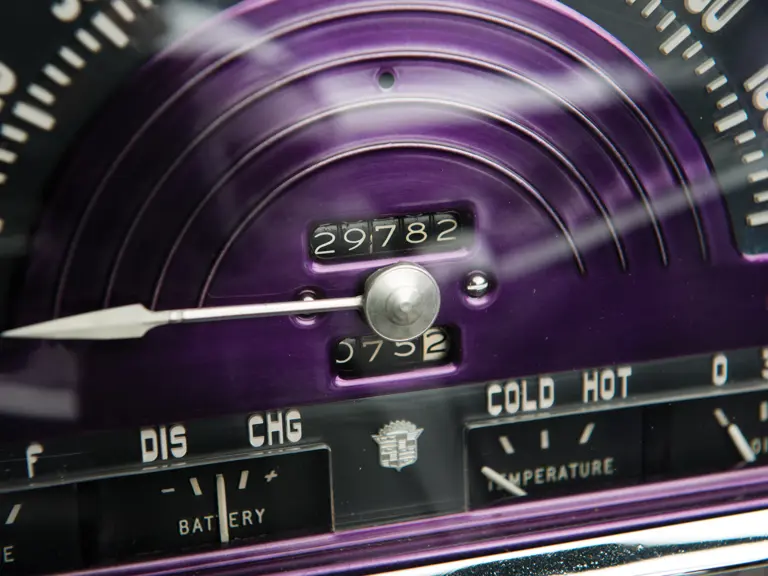

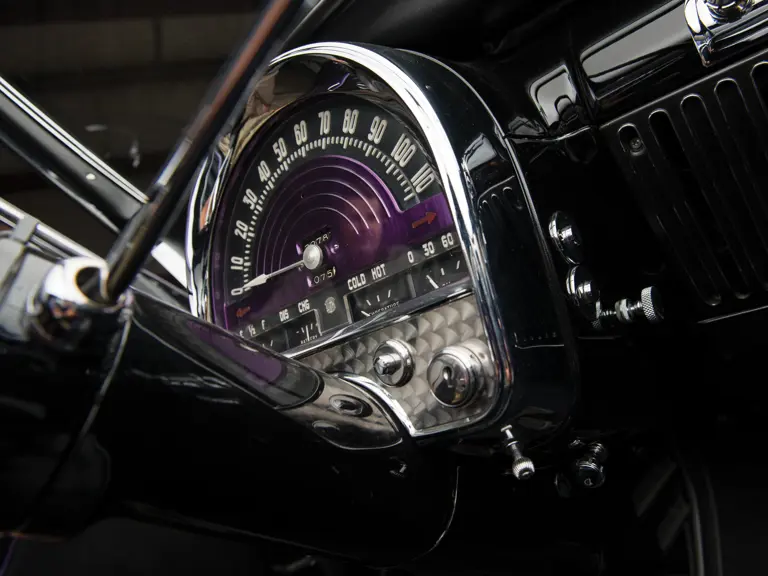
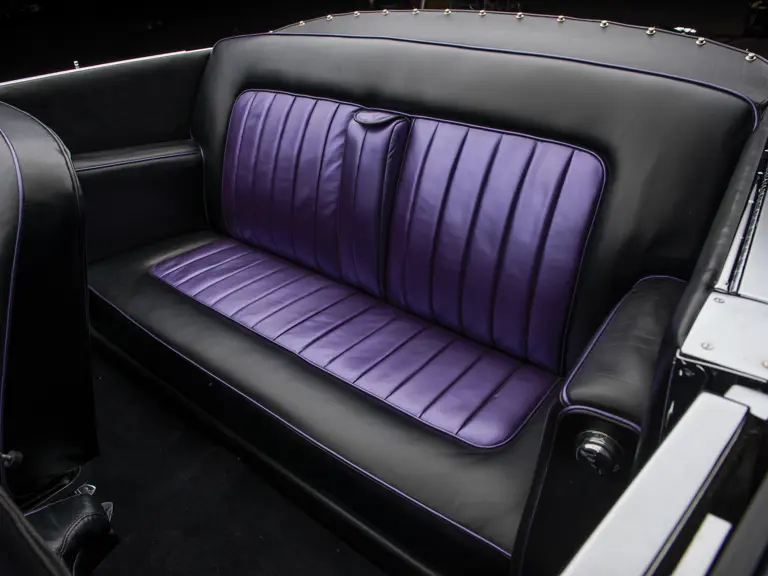
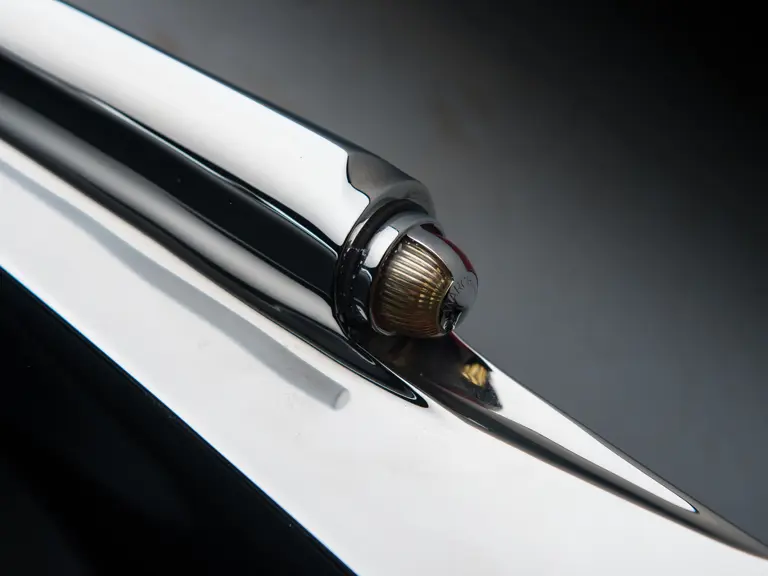
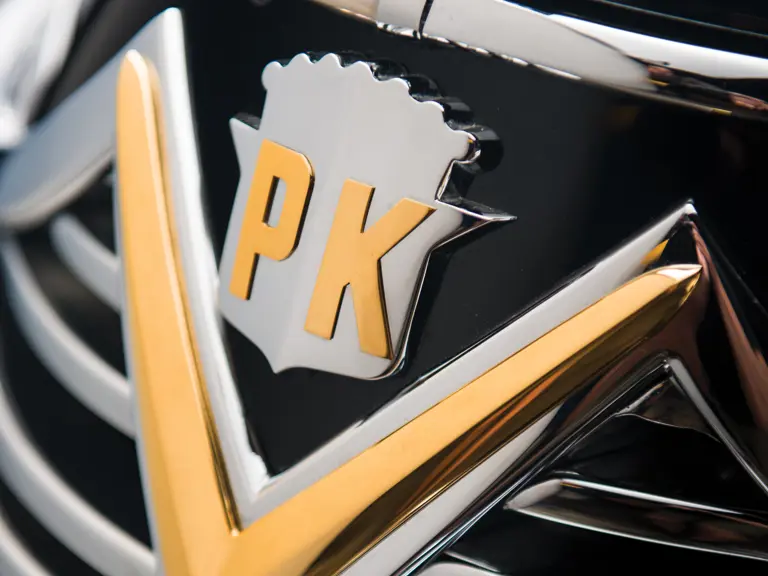
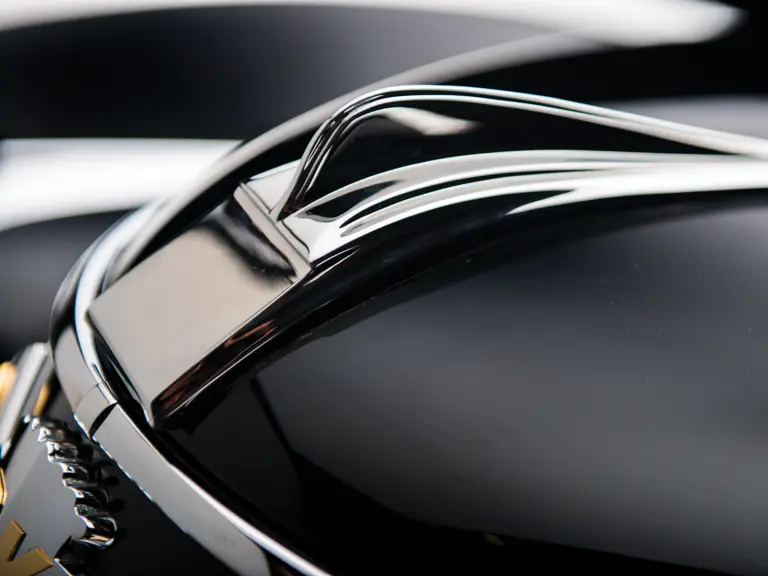
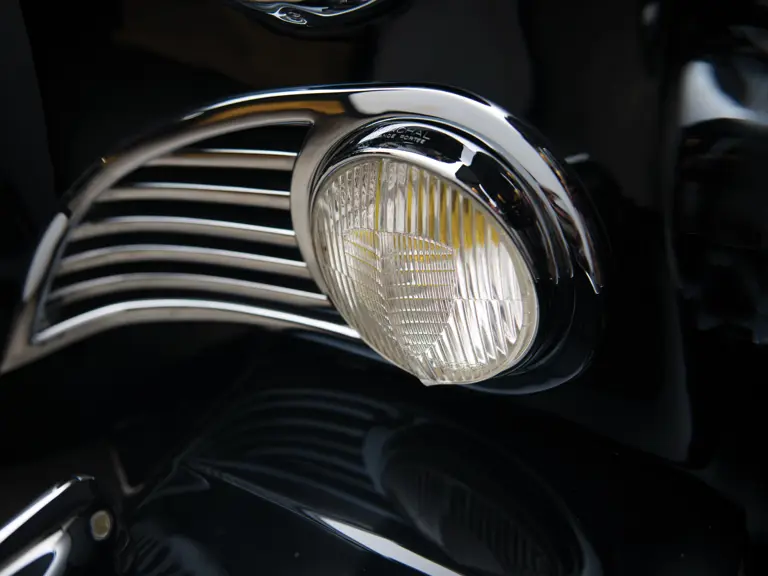
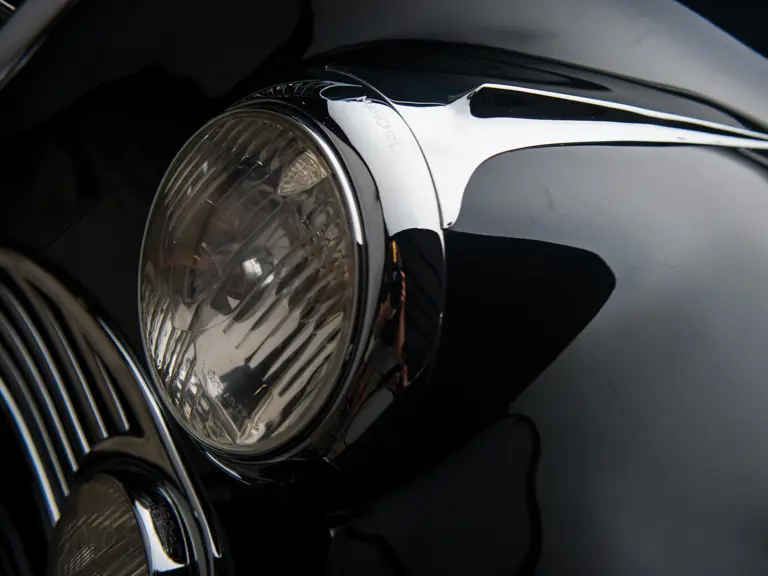
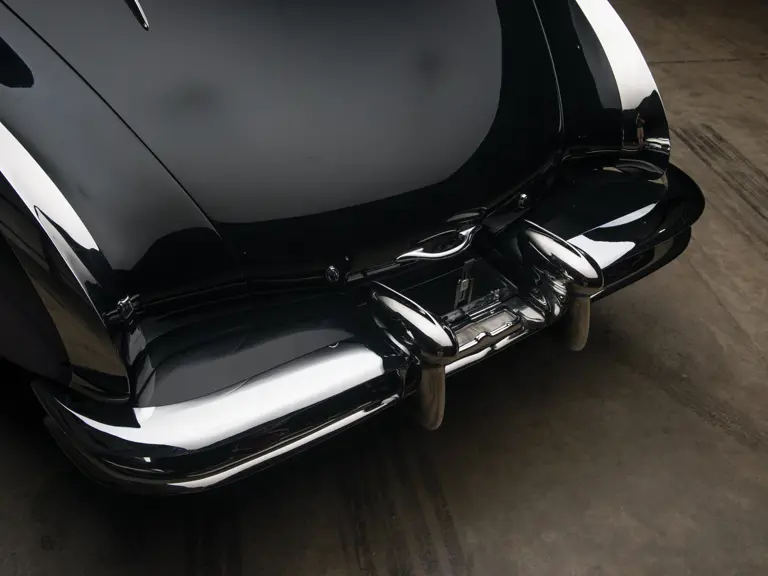
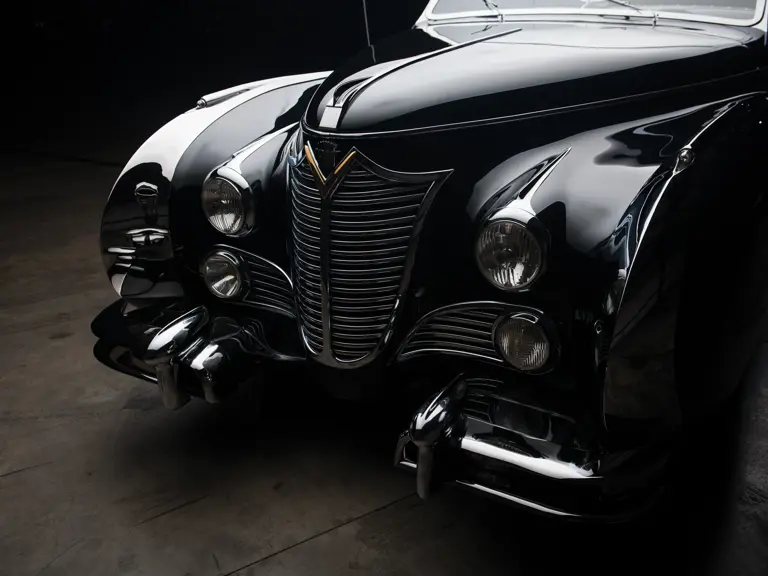
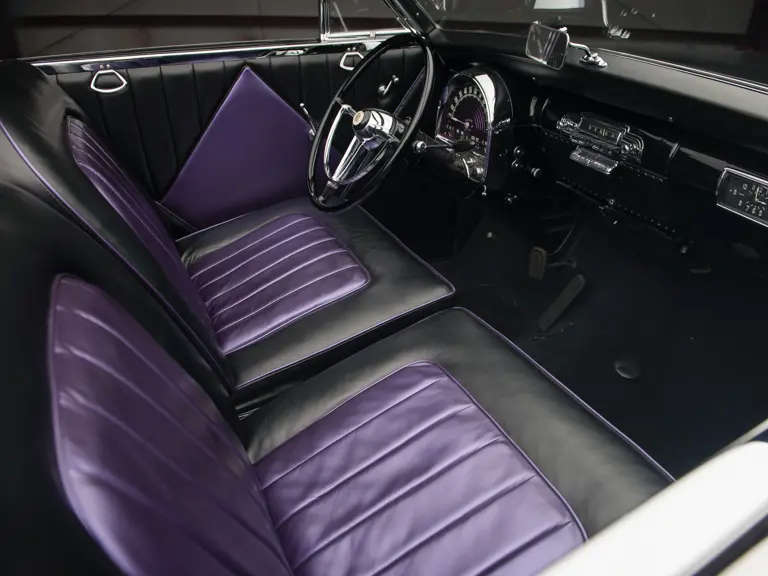
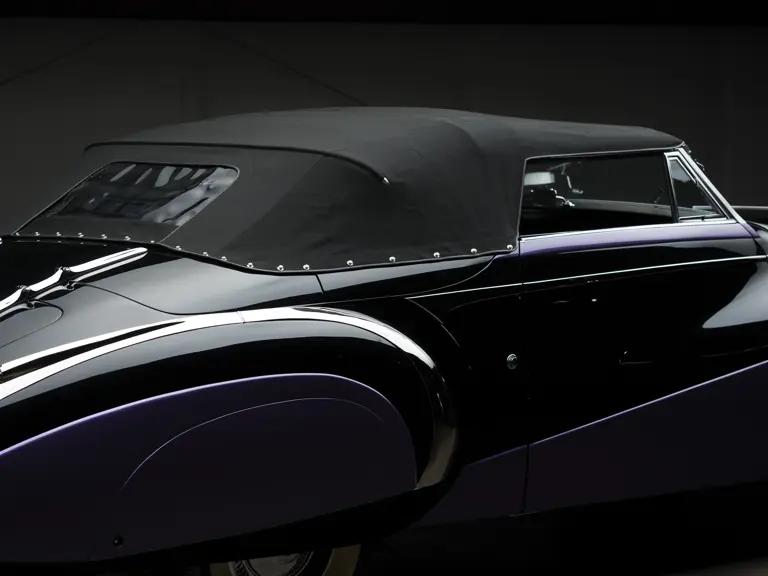
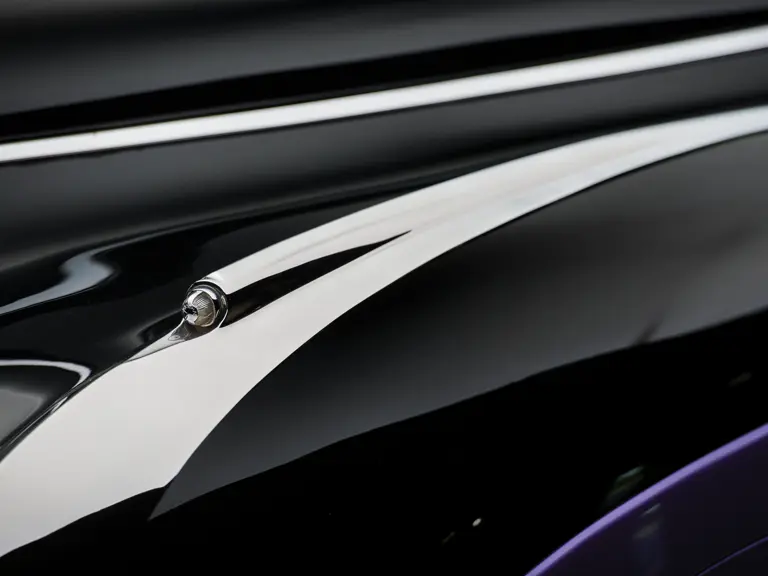

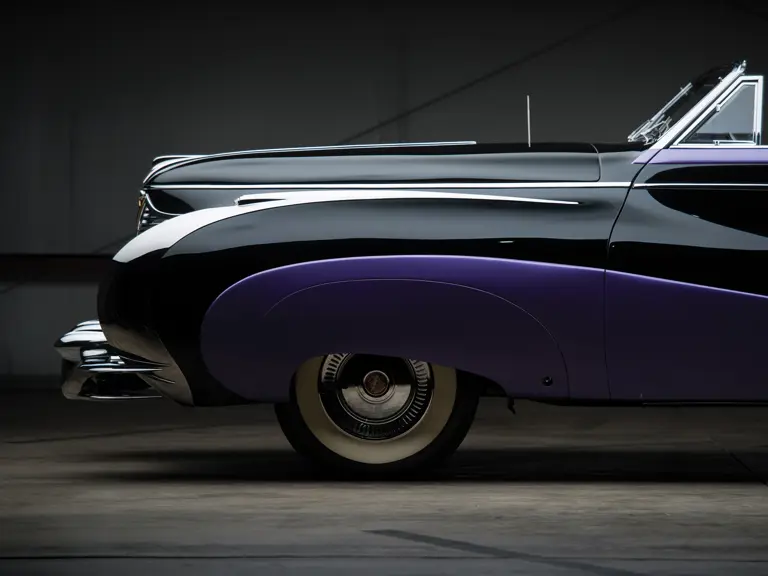
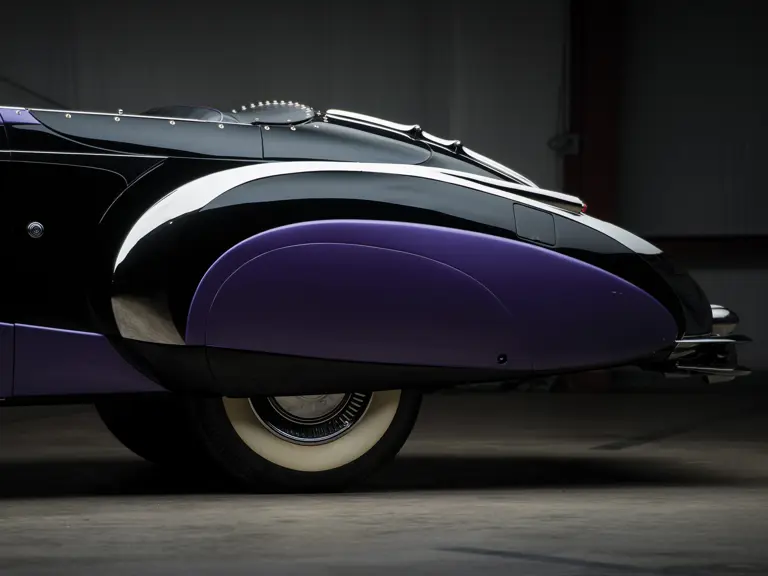
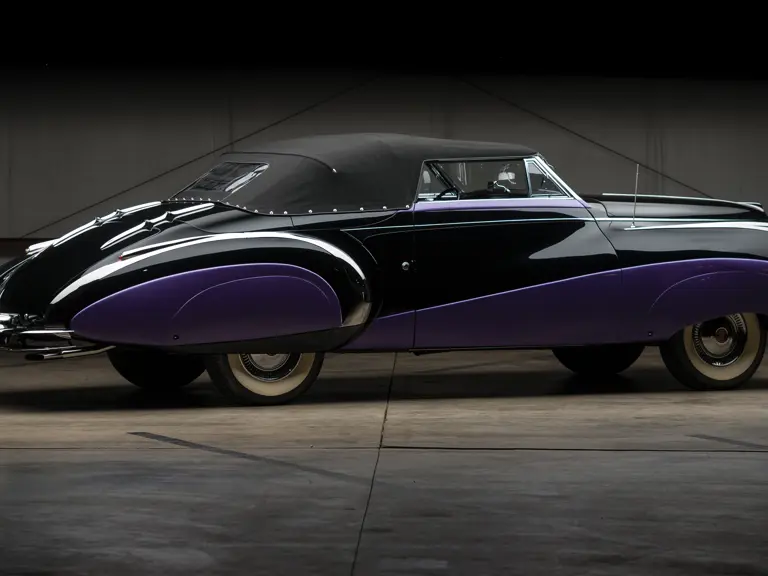
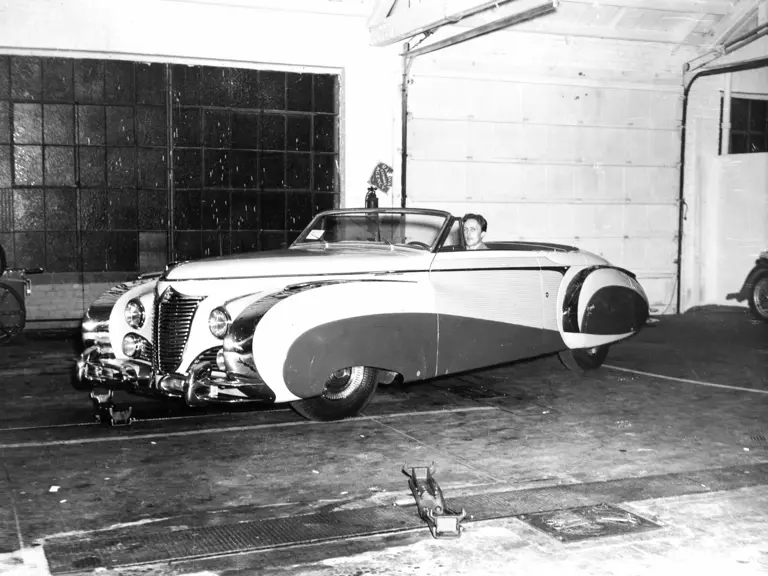
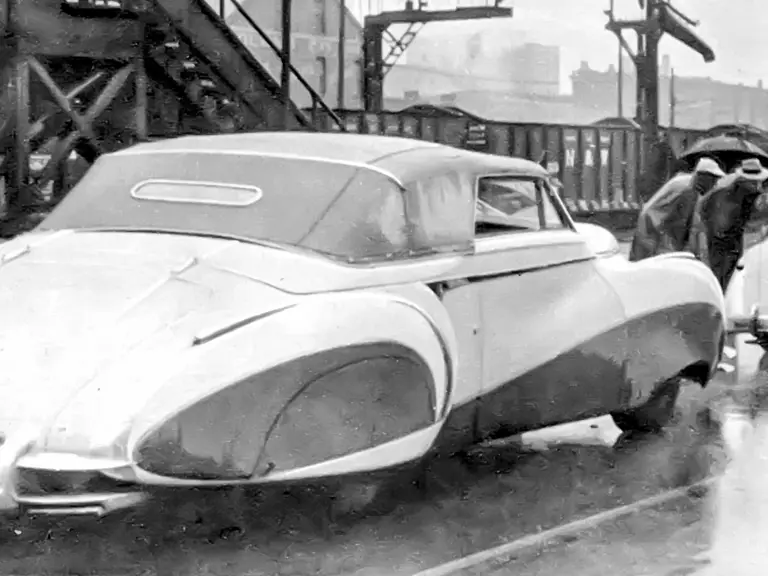
 | New York, New York
| New York, New York
